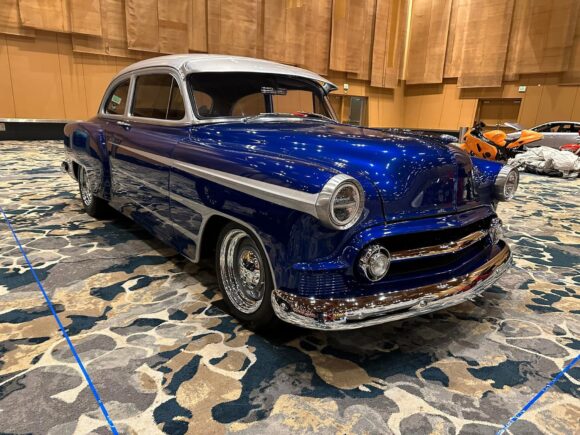When a client buys a classic or exotic car, they’re purchasing far more than transportation–they’re investing in something personal, emotional, and often irreplaceable. Whether it’s a meticulously restored Mustang, a cherished Corvette, or a modern collector favorite like an ’80s Camaro IROC-Z, these vehicles represent both passion and value.
Yet many collectors don’t realize their prized vehicle isn’t adequately protected by a standard auto policy. That’s where agents and brokers play a vital role.
By understanding the nuances of collector vehicle insurance, they can help clients protect their investments and build stronger, more loyal relationships in the process.
Agreed Value
The single most important distinction between collector and standard auto insurance is agreed value coverage. Unlike a traditional policy that settles claims based on actual cash value (ACV), which factors in depreciation and fluctuations in the market, an agreed value policy locks in the car’s insured value up front.
For example, if a client insures their 1969 Camaro SS for an agreed value of $50,000, that’s exactly what they’ll receive if the car is totaled, minus any deductible–regardless of fluctuating market conditions.
By contrast, a standard auto policy might only pay out the depreciated market value at the time of loss, which could be significantly lower. Some clients think a “stated value” or “stated amount” policy provides equivalent protection, but that coverage still allows the insurer to adjust the payout based on ACV.
Helping clients understand this distinction is key.
Agreed value eliminates ambiguity and ensures true financial protection for vehicles that can’t easily be replaced.
Isn’t Just for Antiques
A common misconception is that collector insurance applies only to cars over 25 years old. But many modern classics–such as 2000s Mustangs, 2000s and newer Corvettes, or even recent limited-edition performance models–can qualify for collector coverage.
If a vehicle is not used for daily commuting, is stored securely, and is maintained as a hobby or investment, it likely fits the collector profile. Agents should look for signs that a client treats a car as a “toy” and not a tool: activities such as weekend drives, participation in shows or clubs, and careful maintenance habits.
Understanding this expanded definition of collector coverage can help agents identify opportunities within their existing books of business. For example, a client with a pristine 2003 BMW M3 or a garage-kept 2010 Chevy Camaro SS may not realize they’re eligible for specialized coverage.
Matching Lifestyle
Collector car ownership has evolved. While traditional collectors might have trailered their vehicles to occasional events, many modern enthusiasts prefer to enjoy them on the open road. Specialty insurers are responding with flexible mileage allowances and occasional-use options that honor the spirit of collector ownership while recognizing real-world use.
Agents should ask questions about driving habits, storage conditions, and event participation. Matching clients with the right policy–one that accommodates occasional drives without compromising coverage–shows expertise and care.
Annual Policy Reviews Keep Coverage Current
Collector car values fluctuate with market trends, generational preferences, and economic conditions. As a result, some vehicles appreciate rapidly while others plateau or decline.
Agents should encourage clients to review their policy annually to confirm that the agreed value still reflects the car’s current market worth. A quick valuation update can prevent underinsurance and ensure the policy evolves alongside the vehicle’s value and usage.
Specialized Support for Unique Risks
Collector vehicle owners often engage in activities that go beyond ordinary use, such as road rallies, parades, car shows, cruise-ins, or concours events. These scenarios–along with the unique designs of the collector cars themselves–require a specialized skillset for repairs, and working with claims professionals who understand those repairs is critical. Having an adjuster who speaks the collector’s language can make all the difference when resolving a claim or arranging specialized repairs. This depth of understanding is part of what separates a true collector policy from standard auto coverage.
Protecting What Drives Us
Collector vehicle insurance isn’t just about protecting metal and paint; it’s also about safeguarding memories, milestones, and passions. By mastering the details of agreed value coverage, understanding evolving collector demographics, and aligning policies with how enthusiasts actually use their vehicles, agents can deliver exceptional service and unlock a growing, loyal segment of the market. If an insured trusts an agent to insure their prized possession, there’s a good chance they will trust that agent to insure everything else.
Topics Agencies Auto Personal Auto
Was this article valuable?
Here are more articles you may enjoy.



 Dozens of State Attorneys General Urge Congress Not to Block AI Laws
Dozens of State Attorneys General Urge Congress Not to Block AI Laws  Acrisure CEO Greg Williams Makes $400M Commitment to Michigan State University
Acrisure CEO Greg Williams Makes $400M Commitment to Michigan State University  Florida, East Coast to See Big Insured Losses From More Cat 5 Storms, Researchers Say
Florida, East Coast to See Big Insured Losses From More Cat 5 Storms, Researchers Say  Surveys Show Concerns About Florida Market, But Consumers Are Warming Up
Surveys Show Concerns About Florida Market, But Consumers Are Warming Up 


